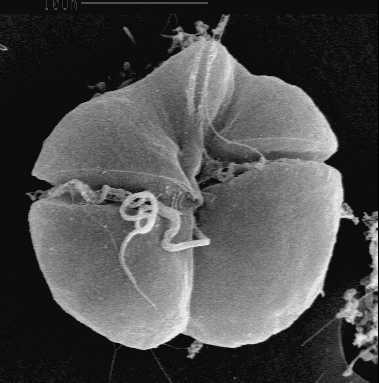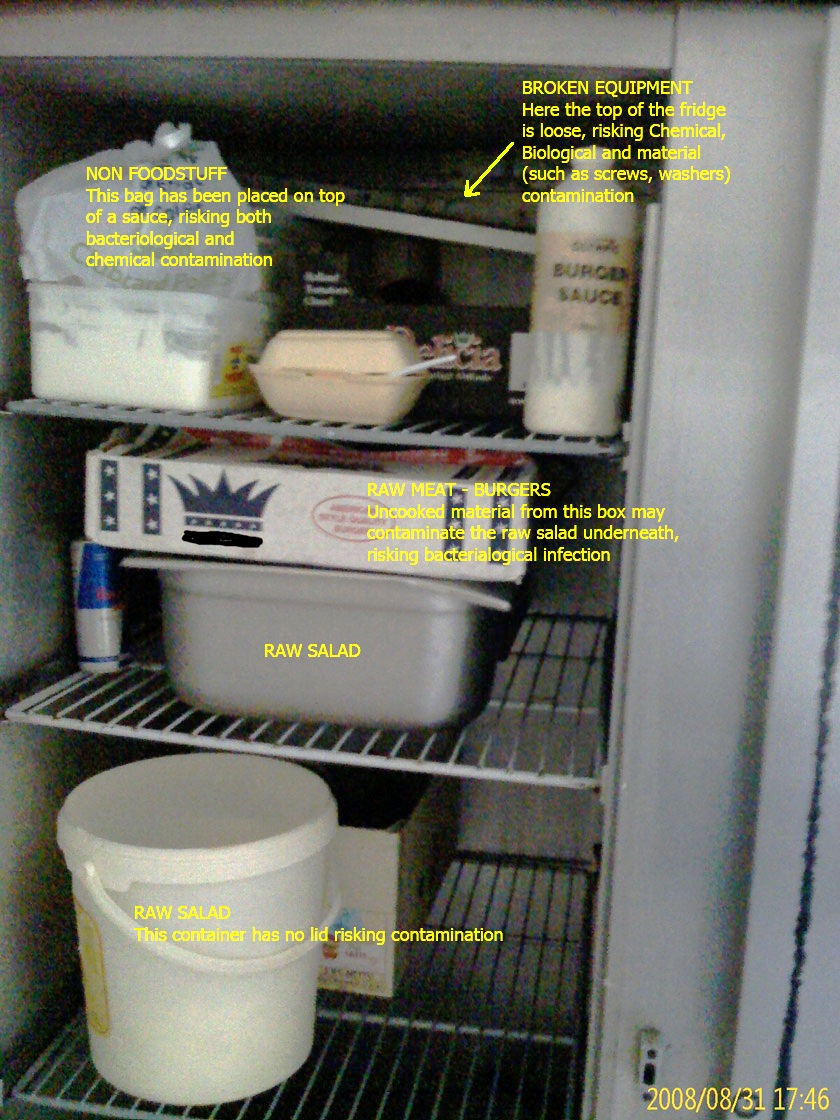|
Neurotoxic Shellfish Poisoning
Neurotoxic shellfish poisoning (NSP) is caused by the consumption of brevetoxins, which are marine toxins produced by the dinoflagellate ''Karenia brevis'' (among several others). These toxins can produce a series of gastrointestinal and neurological effects. Outbreaks of NSP commonly take place following harmful algal bloom (HAB) events, commonly referred to as "Florida red tide" (given that blooms are more commonplace along the coasts of Florida and Texas, especially during late summer and early fall). Algal blooms are a naturally-occurring phenomenon, however their frequency has been increasing in recent decades at least in-part due to human activities, climate changes, and the eutrophication (over-abundance of plant nutrients as a result of agricultural runoff, deforestation, river bed erosion, etc.) of marine waters. HABs have been occurring for all of documented history, evidenced by the Native Americans' understanding of the dangers of shellfish consumption during periods ... [...More Info...] [...Related Items...] OR: [Wikipedia] [Google] [Baidu] |
Karenia Brevis
''Karenia brevis'' is a microscopic, single-celled, photosynthetic organism in the genus '' Karenia''. It is a marine dinoflagellate commonly found in the waters of the Gulf of Mexico. It is the organism responsible for the "Florida red tides" that affect the Gulf coasts of Florida and Texas in the U.S., and nearby coasts of Mexico. ''K. brevis'' has been known to travel great lengths around the Florida peninsula and as far north as the Carolinas. Each cell has two flagella that allow it to move through the water in a spinning motion. ''K. brevis'' is unarmored, and does not contain peridinin. Cells are between 20 and 40 μm in diameter. ''K. brevis'' naturally produces a suite of potent neurotoxins collectively called brevetoxins, which cause gastrointestinal and neurological problems in other organisms and are responsible for large die-offs of marine organisms and seabirds. History The classification of ''K. brevis'' has changed over time as advances in technology are mad ... [...More Info...] [...Related Items...] OR: [Wikipedia] [Google] [Baidu] |
Foodborne Illness
Foodborne illness (also known as foodborne disease and food poisoning) is any illness resulting from the contamination of food by pathogenic bacteria, viruses, or parasites, as well as prions (the agents of mad cow disease), and toxins such as aflatoxins in peanuts, poisonous mushrooms, and various species of beans that have not been boiled for at least 10 minutes. While contaminants directly cause some symptoms, many effects of foodborne illness result from the body's immune response to these agents, which can vary significantly between individuals and populations based on prior exposure. Symptoms vary depending on the cause. They often include vomiting, fever, aches, and diarrhea. Bouts of vomiting can be repeated with an extended delay in between. This is because even if infected food was eliminated from the stomach in the first bout, microbes, like bacteria (if applicable), can pass through the stomach into the intestine and begin to multiply. Some types of microbe ... [...More Info...] [...Related Items...] OR: [Wikipedia] [Google] [Baidu] |
Paralytic Shellfish Poisoning
Paralytic shellfish poisoning (PSP) is one of the four recognized syndromes of shellfish poisoning, which share some common features and are primarily associated with bivalve mollusks (such as mussels, clams, oysters and scallops). These shellfish are filter feeders and accumulate neurotoxins, chiefly saxitoxin, produced by microscopic algae, such as dinoflagellates, diatoms, and cyanobacteria. Dinoflagellates of the genus '' Alexandrium'' are the most numerous and widespread saxitoxin producers and are responsible for PSP blooms in subarctic, temperate, and tropical locations. The majority of toxic blooms have been caused by the morphospecies '' Alexandrium catenella, Alexandrium tamarense'', '' Gonyaulax catenella'' and '' Alexandrium fundyense'', which together comprise the ''A. tamarense'' species complex. In Asia, PSP is mostly associated with the occurrence of the species ''Pyrodinium bahamense''. Some pufferfish, including the chamaeleon puffer, also contain saxitoxin, m ... [...More Info...] [...Related Items...] OR: [Wikipedia] [Google] [Baidu] |
Diarrheal Shellfish Poisoning
Diarrheic shellfish poisoning (DSP) is one of the four recognized symptom types of shellfish poisoning, alongside paralytic shellfish poisoning, neurotoxic shellfish poisoning and amnesic shellfish poisoning. As the name suggests, it mainly manifests as diarrhea. Abdominal pain, nausea and vomiting may also occur. DSP and its symptoms usually set in within about half an hour of ingesting infected shellfish, and last for about one day. The causative poison is okadaic acid, which inhibits intestinal cellular dephosphorylation. This causes the cells to become very water-permeable and the host to profusely defecate into a high risk of dehydration. See also * Amnesic shellfish poisoning (ASP) * Harmful algal blooms (HABs) * Neurotoxic shellfish poisoning (NSP) * Paralytic shellfish poisoning Paralytic shellfish poisoning (PSP) is one of the four recognized syndromes of shellfish poisoning, which share some common features and are primarily associated with bivalve mollusks (such a ... [...More Info...] [...Related Items...] OR: [Wikipedia] [Google] [Baidu] |
Ciguatera Fish Poisoning
Ciguatera fish poisoning (CFP), also known as ciguatera, is a foodborne illness caused by eating tropical reef fish contaminated with ciguatoxins. Such individual fish are said to be ciguatoxic. Symptoms may include diarrhea, vomiting, numbness, itchiness, dysesthesia, sensitivity to hot and cold, dizziness, and weakness with lethargy. The onset of symptoms varies with the amount of toxin absorbed. If a large quantity of toxins are consumed symptoms may appear within half an hour. If a low amount of toxins are consumed symptoms may take a few days to appear. Diarrhea may last up to four days. Symptoms may last a few weeks to a few months. Heart problems such as slow heart rate and low blood pressure may occur. The specific toxins involved are the ciguatoxins and maitotoxin. They are originally made by a small marine organism, ''Gambierdiscus toxicus'', that grows on and around coral reefs in tropical and subtropical waters. These are eaten by herbivorous fish which in turn are e ... [...More Info...] [...Related Items...] OR: [Wikipedia] [Google] [Baidu] |
Amnesic Shellfish Poisoning
Amnesic shellfish poisoning (ASP) is an illness caused by consumption of shellfish that contain the marine biotoxin called domoic acid. In mammals, including humans, domoic acid acts as a neurotoxin Neurotoxins are toxins that are destructive to nervous tissue, nerve tissue (causing neurotoxicity). Neurotoxins are an extensive class of exogenous chemical neurological insult (medical), insultsSpencer 2000 that can adversely affect function ..., causing permanent short-term memory loss, brain damage, and death in severe cases. This toxin is produced naturally by marine diatoms belonging to the genus ''Pseudo-nitzschia'' and the species ''Nitzschia navis-varingica''. When accumulated in high concentrations by shellfish during filter feeding, domoic acid can then be passed on to birds, marine mammals, and humans by consumption of the contaminated shellfish. Although human illness due to domoic acid has only been associated with shellfish, the toxin can bioaccumulation, bioaccum ... [...More Info...] [...Related Items...] OR: [Wikipedia] [Google] [Baidu] |
Pesticide Poisoning
A pesticide poisoning occurs when pesticides, chemicals intended to control a pest, affect non-target organisms such as humans, wildlife, plants, or bees. There are three types of pesticide poisoning. The first of the three is a single and short-term very high level of exposure which can be experienced by individuals who die by suicide, as well as pesticide formulators. The second type of poisoning is long-term high-level exposure, which can occur in pesticide formulators and manufacturers. The third type of poisoning is a long-term low-level exposure, which individuals are exposed to from sources such as pesticide residues in food as well as contact with pesticide residues in the air, water, soil, sediment, food materials, plants and animals. In developing countries, such as Sri Lanka, pesticide poisonings from short-term very high level of exposure (acute poisoning) is the most worrisome type of poisoning. However, in developed countries, such as Canada, it is the complete o ... [...More Info...] [...Related Items...] OR: [Wikipedia] [Google] [Baidu] |
Ciguatera Fish Poisoning
Ciguatera fish poisoning (CFP), also known as ciguatera, is a foodborne illness caused by eating tropical reef fish contaminated with ciguatoxins. Such individual fish are said to be ciguatoxic. Symptoms may include diarrhea, vomiting, numbness, itchiness, dysesthesia, sensitivity to hot and cold, dizziness, and weakness with lethargy. The onset of symptoms varies with the amount of toxin absorbed. If a large quantity of toxins are consumed symptoms may appear within half an hour. If a low amount of toxins are consumed symptoms may take a few days to appear. Diarrhea may last up to four days. Symptoms may last a few weeks to a few months. Heart problems such as slow heart rate and low blood pressure may occur. The specific toxins involved are the ciguatoxins and maitotoxin. They are originally made by a small marine organism, ''Gambierdiscus toxicus'', that grows on and around coral reefs in tropical and subtropical waters. These are eaten by herbivorous fish which in turn are e ... [...More Info...] [...Related Items...] OR: [Wikipedia] [Google] [Baidu] |
Paralytic Shellfish Poisoning
Paralytic shellfish poisoning (PSP) is one of the four recognized syndromes of shellfish poisoning, which share some common features and are primarily associated with bivalve mollusks (such as mussels, clams, oysters and scallops). These shellfish are filter feeders and accumulate neurotoxins, chiefly saxitoxin, produced by microscopic algae, such as dinoflagellates, diatoms, and cyanobacteria. Dinoflagellates of the genus '' Alexandrium'' are the most numerous and widespread saxitoxin producers and are responsible for PSP blooms in subarctic, temperate, and tropical locations. The majority of toxic blooms have been caused by the morphospecies '' Alexandrium catenella, Alexandrium tamarense'', '' Gonyaulax catenella'' and '' Alexandrium fundyense'', which together comprise the ''A. tamarense'' species complex. In Asia, PSP is mostly associated with the occurrence of the species ''Pyrodinium bahamense''. Some pufferfish, including the chamaeleon puffer, also contain saxitoxin, m ... [...More Info...] [...Related Items...] OR: [Wikipedia] [Google] [Baidu] |
Food Allergy
A food allergy is an abnormal immune system, immune response to food. The symptoms of the allergic reaction may range from mild to severe. They may include pruritus, itchiness, swelling of the tongue, vomiting, diarrhea, hives, trouble breathing, or low blood pressure. This typically occurs within minutes to several hours of exposure. When the symptoms are severe, it is known as anaphylaxis. A food intolerance and food poisoning are separate conditions, not due to an immune response. Common foods involved include cow's milk, peanuts, egg as food, eggs, shellfish, fish as food, fish, tree nuts, soybean, soy, wheat, and sesame. The common allergies vary depending on the country. Risk factors include a family history of allergies, vitamin D deficiency, obesity, and high levels of cleanliness. Allergies occur when immunoglobulin E (IgE), part of the body's immune system, binds to food molecules. A protein in the food is usually the problem. This triggers the release of inflammator ... [...More Info...] [...Related Items...] OR: [Wikipedia] [Google] [Baidu] |
Mast Cell
A mast cell (also known as a mastocyte or a labrocyte) is a resident cell of connective tissue that contains many granules rich in histamine and heparin. Specifically, it is a type of granulocyte derived from the myeloid stem cell that is a part of the immune and neuroimmune systems. Mast cells were discovered by Friedrich von Recklinghausen and later rediscovered by Paul Ehrlich in 1877. Although best known for their role in allergy and anaphylaxis, mast cells play an important protective role as well, being intimately involved in wound healing, angiogenesis, immune tolerance, defense against pathogens, and vascular permeability in brain tumors. The mast cell is very similar in both appearance and function to the basophil, another type of white blood cell. Although mast cells were once thought to be tissue-resident basophils, it has been shown that the two cells develop from different hematopoietic lineages and thus cannot be the same cells. Structure Mast cells ar ... [...More Info...] [...Related Items...] OR: [Wikipedia] [Google] [Baidu] |



